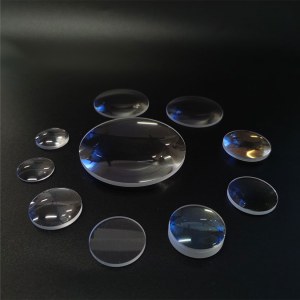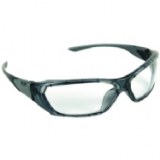Optical Lenses
Prix : 1usd-10000usd
An optical lens is a transparent device made of glass or other transparent materials with the purpose of focusing or diverging light. Lenses play a crucial role in optics and are widely used in various optical instruments such as eyeglasses, cameras, microscopes, telescopes, and binoculars. Selecting the right optical lenses involves considering several factors to ensure they meet your specific vision needs and preferences, like Prescription Requirements, Lens Material, Lens Design, Coatings, etc. This article will introduce you the types of Optical Lenses, it's working principle, materials, application, etc.
Optical Lenses Types and Shapes
Optical lenses come in various types and shapes, each designed to serve specific purposes in different optical applications.
Positive Lenses
Positive lenses, also known as converging lenses, are a type of optical lens that brings parallel rays of light together to a focal point. These lenses are thicker in the center than at the edges. Positive lenses are commonly used in various optical devices and applications.
Characteristics:
Convergence: Positive lenses converge light rays that pass through them. Parallel rays of light are bent towards a common focal point after passing through the lens.
Thicker Center: The center of a positive lens is thicker than the edges. This shape contributes to the converging nature of the lens.
Focal Point: Positive lenses have a real focal point where converging light rays actually meet. The distance from the lens to the focal point is called the focal length.
Magnification: Positive lenses are often associated with magnification, making them useful in magnifying glasses and optical systems.
Negative Lenses
A negative lens, also known as a diverging lens, is an optical lens that causes parallel rays of light to diverge as if they were coming from a virtual focal point. Negative lenses are thinner in the center than at the edges. These lenses have specific features and find applications in various optical systems.
Characteristics:
Divergence: Negative lenses cause parallel rays of light to spread out, creating the illusion of diverging from a virtual focal point.
Thinner Center: Negative lenses are thinner in the center and thicker at the edges.
Virtual Focal Point: Negative lenses create a virtual focal point where the diverging rays appear to originate.
Curvature: The surfaces of negative lenses are curved, with the center being less curved than the edges.
Meniscus Lenses
A meniscus lens is a type of lens with one concave (inwardly curved) surface and one convex (outwardly curved) surface, resembling the shape of a crescent moon or a double-convex lens with one side flattened. This unique design gives the lens distinct features and makes it suitable for various applications.
Characteristics:
Asymmetric Curvature: Meniscus lens has one side that is concave and one side that is convex. The concave side is less curved than the convex side.
Thickness Variation: The lens is thicker at its center and thins out toward the edges.
Reduced Spherical Aberration: The meniscus shape helps reduce spherical aberration, improving image quality.
Focusing and Magnification: Meniscus lenses are used for focusing light in optical systems, contributing to magnification.
Aberration Correction: They are used to correct optical aberrations in certain optical instruments.
Spherical Lenses
Spherical lens is one of the lenses whose surfaces are sections of a sphere. There are two main types of spherical lenses: convex lenses and concave lenses.
Convex Lens
A convex lens is a type of optical lens that is thicker in the center than at the edges. Also known as a converging lens, it converges parallel rays of light to a focal point. Convex lenses have several distinctive features that make them useful in various optical applications.
Characteristics:
Convergence: Convex lenses cause parallel rays of light to converge or come together at a focal point after passing through the lens.
Thicker Center: The center of a convex lens is thicker than the edges, contributing to its converging properties.
Focal Point: Convex lenses have a real focal point where converged light rays meet. The distance from the lens to the focal point is known as the focal length.
Curvature: Both surfaces of a convex lens are curved outward.
Magnification: Convex lenses are often associated with magnification and are used in magnifying glasses and optical instruments to enlarge images.
Real and Virtual Images: Depending on the placement of the object relative to the focal point, convex lenses can produce both real and virtual images.
Concave Lens
A concave lens is a type of lens that is thinner at the center than at the edges. It is also known as a diverging lens because it causes parallel rays of light to diverge or spread out. Concave lenses are characterized by their curved surfaces, where the inner surface is more curved than the outer surface. The center of the lens is its thinnest point.
Key characteristics:
Divergence of Light: Concave lenses cause parallel rays of light to spread out, making them appear as if they are coming from a point behind the lens. This virtual point is known as the focal point.
Negative Focal Length: The focal length of a concave lens is considered negative. It is measured from the lens to the virtual focal point behind the lens.
Forms Virtual Images: Concave lenses always form virtual images. These images are formed on the same side as the incident light and cannot be projected onto a screen.
Thin at the Center: The center of the concave lens is its thinnest point, and the thickness increases toward the edges.
Applications: Concave lenses are commonly used in various optical devices, such as eyeglasses for correcting nearsightedness (myopia), cameras, and telescopes.
Cylindrical Lenses
Cylindrical lenses are optical lenses characterized by one surface being shaped like a portion of a cylinder, while the other surface remains flat or slightly curved. Unlike spherical lenses, which have a symmetrical curvature in all directions, cylindrical lenses have different curvatures along different axes. They are commonly used to correct astigmatism in vision and have applications in various optical systems.
Characteristics:
Cylindrical Shape: One surface is curved in the shape of a portion of a cylinder. The other surface is typically flat or has a minimal curvature.
Astigmatism Correction: Cylindrical lenses are often used to correct astigmatism, a vision condition where the eye has different focal points in different meridians.
Different Powers in Different Axes: Unlike spherical lenses with the same power in all directions, cylindrical lenses have different powers along the cylindrical axis and the perpendicular axis (cross-cylinder axis).
Axis Orientation: Cylindrical lenses are characterized by their axis orientation, indicating the direction of the cylinder's curvature.
Applications:
Commonly used in eyeglasses to correct astigmatism.
Applied in optical systems where astigmatism correction is necessary, such as in cameras and laser systems.
Achromats
Achromatic lens, commonly referred to as achromats, are optical lenses designed to minimize chromatic aberration. Chromatic aberration is the phenomenon where different colors of light are focused at different distances, causing blurring and color fringing in optical systems. Achromatic lenses are crafted by combining two or more lens elements with different types of glass to counteract this effect.
Characteristics:
Color Correction: Achromats are specifically designed to reduce or eliminate chromatic aberration by combining lenses with different dispersions of light. This results in improved color accuracy and sharpness.
Doublet Design: Achromats typically consist of two lens elements made from different types of glass. The combination of positive and negative lens elements helps to cancel out chromatic aberration.
Commonly Used in Telescopes and Microscopes: Achromatic lenses are widely used in optical instruments such as telescopes and microscopes where precise color correction is essential for clear and detailed imaging.
Applications in Photography: Achromatic lenses are used in cameras and photographic equipment to enhance image quality by reducing color fringing, especially in high-contrast scenes.
Improved Image Quality: By minimizing chromatic aberration, achromats contribute to sharper, more accurate images with improved contrast.
Limited Wavelength Range: While achromats significantly reduce chromatic aberration over a certain wavelength range, they may not completely eliminate it across the entire spectrum.
Optical Lenses Material
Optical lenses can be made from various materials, each with its unique characteristics. The choice of lens material depends on the specific requirements of the application.
Plastic (Acrylic and Polycarbonate):
Features:
Lightweight.
Impact-resistant (especially polycarbonate).
Can be easily molded into complex shapes.
Considerations:
Prone to scratching (coatings can help).
Lower refractive index than glass.
High-Index Plastics:
Features:
Higher refractive index, allowing for thinner lenses.
Lighter than traditional glass.
Considerations:
May have increased chromatic aberration.
More expensive than standard plastics.
CR-39 (Allyl Diglycol Carbonate):
Features:
Lightweight.
Good optical clarity.
Commonly used in prescription eyeglasses.
Considerations:
Thicker than high-index materials for the same prescription.
Flint Glass (Lead Glass):
Features:
High refractive index.
Used in certain optical applications.
Considerations:
Contains lead, which can be a concern for environmental and health reasons.
Fused Silica (Quartz Glass):
Features:
Excellent optical transmission in the UV range.
Low thermal expansion.
Ideal for high-precision optical applications.
Considerations:
Brittle and can be challenging to work with.
Optical Lenses Applications
Optical lenses find diverse applications in various fields, contributing to advancements in technology and scientific exploration.
Astronomy and Satellites:
Telescopes: Optical lenses are fundamental components in telescopes, enabling astronomers to observe distant celestial objects. Large telescopes often use complex lens systems for magnification and image clarity.
Satellite Imaging: Optical lenses play a crucial role in satellite imaging systems, capturing high-resolution images of the Earth's surface for applications such as weather monitoring, mapping, and environmental surveillance.
Projectors:
Projection Systems: Projectors use lenses to focus and project images onto screens or surfaces. Complex lens arrangements help optimize image quality, brightness, and focus in various projection applications, including home theaters, classrooms, and business presentations.
Cameras and Phones:
Photography: Optical lenses in cameras capture and focus light to create images. Different lens types, such as wide-angle, telephoto, and macro lenses, contribute to various photographic effects and capabilities.
Smartphone Cameras: Compact lenses in smartphone cameras allow for convenient and high-quality photography. Advancements in lens technology contribute to improved low-light performance, optical zoom, and overall image quality.
Biotechnology:
Microscopes: Optical lenses are integral to microscopes, enabling the visualization of microscopic structures in biology and medicine. High-quality lenses contribute to the clarity and precision of microscopic imaging.
Medical Imaging: In medical devices like endoscopes and imaging systems, optical lenses are used for visualizing internal structures, aiding in diagnostics and surgical procedures.
Environmental Monitoring:
Sensors and Instruments: Optical lenses are used in environmental monitoring devices, such as spectrometers and sensors. These instruments can analyze light to measure environmental parameters like air quality, water quality, and greenhouse gas concentrations.
Lidar Technology: Lenses are critical optical components in Lidar systems used for remote sensing and environmental monitoring. Lidar systems use lasers and lenses to measure distances and create detailed maps.
Optical Lenses Working Principle
A lens operates through the process of refraction, altering the direction of light rays as they traverse it. This change in direction causes the rays to appear as if they emanate from a point either closer or farther away than their actual source. This phenomenon is the reason objects observed through a lens can appear either magnified or diminished in size compared to their actual dimensions. You can find a comprehensive explanation of this phenomenon in our article on light.
As one of optical components companies, we will do our best to meet all the needs of customers.
Personne à contacter : tik tcop, 86 431 89851801
Bonne affaire : acheter au vendeur
Nous vous invitons à lire nos conditions générales d'utilisations. Vous pouvez aussi vous rendre sur nos FAQ et consulter notre page d'informations sur les risques liés à la contrefaçon.
|
Cette page concerne les importateurs et exportateurs de Optical Lenses Rechercher dans la catégorie : Divers Rechercher dans la catégorie : lenses, optical |
Thursday 15 May 2014
Quantité : 50 - Prix : 397,50 €
Die alles inklusive Lösung für Ihr Gewerbe, Büro, Haus, unterwegs etc. Bestellen -> Anschliessen -> Aufnehmen! dann alles in Ordnung!!!! - 4 Überwachungskameras - Nachsicht und Bewegungserkennung - Sehr leichte und schnelle Installation - Aufnahme bis zu 150 Tagen Non Stop...
Euro-Sino
- - Thun
Wednesday 28 August 2013
Quantité : 20 - Prix : 8,50 €
Security & Protection>>Workplace Safety Supplies>>Safety Goggles Colorless polycarbonate lens injected into the saddle Mount elastic and flexible polyurethane for a universal fit for all face sizes Very strong: cushions and absorbs shock Rubber temples for greater...
Fastocks Europe, S.L.
- 46015 - Valencia
- 902099937
Saturday 19 July 2014
Our Multi-Color LED Rope Light consist of red, green, blue and yellow LED lights, joining together to form a colorful and breathtaking rope light. Our manufacturer utilizes sophisticated electro-optical designs to control the blend and diffusion of the light. This technology allows...
Real Green lighting Company
- Bonny Chan
- 529000 - Jiangmen City
- +15 6 02 20 39 93
Paiement sécurisé










